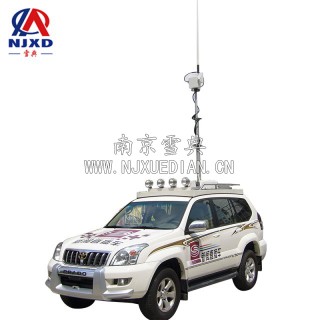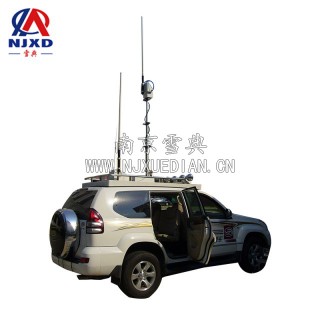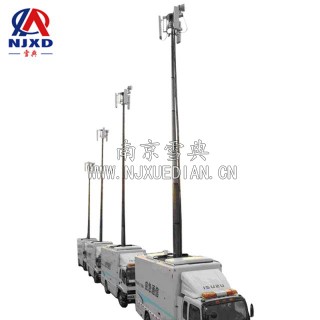NEWS
Classification of lifting communication and remote control communication lines
Time:2020-11-18 View:

Communication line is the way to ensure information transmission. At present, the cable in the long-distance trunk line mainly uses large-core optical cables, as well as satellite, microwave and other wireless lines. Long distance between provinces and provinces is mainly based on optical cables, and there are microwave and satellite circuits. The following describes the Definition, History, classification, technology, and trends of communication lines. It also includes the professional setting of communication lines, communication line equipment, communication line regulations and other related contents.
Definition
Communication line: the transmission medium that transmits electromagnetic wave signals from one place to another in the letter cable connect.
History
The earliest communication line is overhead open line. In 1844, the United States established an overhead line between Washington and Baltimore. At that time, the signal transmitted by the overhead open line was not a telephone signal, but a telegram. The so-called overhead open line (see the term "overhead Open Line") is the uninsulated conductor hanging on the telegraph pole.
By 1850, submarine cables crossing the Strait of ENGLINE were successfully laid between Britain and France, and of course they were also used to send telegrams.
It was not until 1876 that the telephone was invented. People find that open lines or cables are easily interfered by the outside world; Crosstalk is easy to be found between lines, and the quality of calls is poor. Scientists have begun to make unremitting explorations and try hard to find a good solution. For example, double lines are used instead of single lines, and technologies such as open line crossing and cable balance are explored to improve transmission quality. By 1941, the United States innovatively adopted coaxial cable lines, and 480 channels could be opened on one line. Later, it developed to 3600 roads, 10800 roads and 13200 roads; The technology of communication lines has made a qualitative leap.
In 1976, 100 years after the invention of telephone, the first practical communications optical cable was successfully applied to Atlanta experimental system of Bell Research Institute in the United States. In 1988, the first submarine optical cable across the Atlantic Ocean was laid successfully. Have you found it? The United States has always been at the forefront of scientific and technological progress! So. The status of the "first brother" in the American world today is not obtained out of thin air, but also experienced struggle, exploration and innovation.
Let's take a look at China again. It is not too late for the earliest communication line to start. In 1871, China laid submarine cables from Shanghai to Japan, but the technology was not in the hands of the Chinese, this submarine cable was built by Denmark Dabei Telegraph Company. Only in 1881 did China establish the first long-distance open line between Shanghai and Tianjin. It was not until 1962after the founding of New China that 60 long-distance carrier symmetric cables designed and manufactured in China were put into use between Beijing and Shijiazhuang. In 1976, 1800 4-tube coaxial cables designed and manufactured in China successfully connected Beijing, Shanghai and Hangzhou. In 1978, China successfully developed the communications optical cable of multimode optical fiber. Since 1984, single-mode optical fibers have been used on long-distance lines.

Classification
Distinguish by transmission medium
The classification of communication lines has different methods. If divided by transmission medium, it can be divided into the following four categories:
1) overhead open line
2) communication cable
3) communications optical cable
4) communication submarine cable
Distinguish by importance
According to the importance of communication lines, communication lines can be divided into first-level lines, second-level lines and third-level lines.
1) first-class route: refers to the long-distance route and international route designated by the Ministry of Industry and Information Technology from the capital to the capital of each province, municipality directly under the central government and autonomous region, between the capital of each province, municipality directly under the central government and autonomous region.
2) secondary line: refers to the long-distance line from the capital of each province, municipality directly under the central government and autonomous region to each city, county, city and county, between adjacent provinces and counties and designated by the telecommunications administration.
3) Level 3 line: refers to the communication line below the county. Also known as local lines. For example, the communication lines in the city are divided into two types: inter-office trunk lines and user lines. The inter-office relay lines include inter-office trunk lines, long-distance and municipal trunk lines. User lines can be divided into feeder and wiring.
If it is divided according to the application area of communication lines, communication lines can also be divided into long-distance lines, urban lines and rural lines.

CATEGORY
NEWS
- Application and prospect of radio
- Classification of lifting communication and remote control communication lines
- Technology of communication line lifting communication and remote control
- Application of remote control lifting mast automatic control technology
- Telemetry remote control system remote control lifting bracket